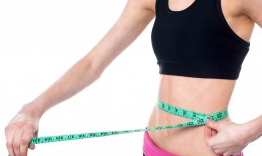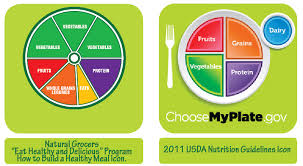….continued from August 25/2014
 When my girls were about four and six, I went alone one day to do my weekly grocery shop. The last thing I added to my basket was six Bismarcks.
When my girls were about four and six, I went alone one day to do my weekly grocery shop. The last thing I added to my basket was six Bismarcks.
A Bismarck is a jelly doughnut. The Co-op bakery made the best Bismarcks. The dough is light and fluffy. They are fried a deep golden-brown. They are injected with real raspberry jam and finished with a light coat of fine, not powdered sugar.
These are still warm and their aroma teases my nose as I start my car. I decide to have one before I leave the parking lot.
One must bite into a Bismarck strategically or risk wearing the filling. If you bite it at the “injection site”, you are rewarded with a burst of flavour in your first bite and you reduce the risk of it volcano-ing down your shirt.
I quickly inhale the first Bismarck.
I reason I can have another since there is no sense taking five doughnuts home for a family of four.
Number Two disappears equally fast, practically melting in my mouth.
I pull away from the parking lot but I still want more. So I reason that I can eat “my donut”. After all, of the four left, one is mine!
It too is gone in a few bites, as though made of air.
Then I think, “I can’t take home three donuts for a family of four!”
So I gobble down the last three!
I’m not quite sure what I did with the bag before I got home. Maybe I ate it too!
I don’t even remember eating those last three Bismarcks. I was likely suffering from a sugar-rush, near a diabetic coma. I do remember the overwhelming feelings of guilt, shame and failure.
What kind of mother gobbles up her own children’s treats?
Why can’t I control myself?
What am I doing to my health?
No wonder I can’t control my weight!
Typical negative talk that I now know feeds those cravings for empty calories.
Over the years I have consumed theater-size bags of Twizzlers, Nibs or other chewy candy, easily in one sitting, sometimes, before the movie started. I have inhaled a whole layer of Turtles chocolates in one ten-minute session and likely dipped into the bottom layer! I have torn through a $50 box of premium chocolates in a couple days, only because polishing it off in one sitting would be embarrassing!
I have known for at least three decades that sugar is evil, yet extricating myself from its grasp was something I didn’t consider and if I did I was certain I would never succeed. How could I possibly give up sugar? Sugar is love!
My path towards health has progressed since my peaches epiphany 35 years ago. In 2005 I discover I have gluten intolerance. Eliminating wheat results in significant weight-loss and the clearing up of the acne that plagued me from my teens to my mid-forties. I used to joke that it was insulting to have zits sprouting out of my wrinkles.
I actively seek ways to increase my health. I study health issues and learn about food. Each year I choose to do something specific to improve my health. I give up the small bit of alcohol I consumed. I feel better. One year I resolve to eat more vegetables by ensuring they occupy at least half of the real estate of my plate. I feel better. The next year it is to eat more raw foods. I notice that my wrinkles appeared to fade, (or maybe that’s just the wishful thinking of a middle-aged woman.) But I feel better!
One year I decide to eliminate dairy. I hadn’t been a huge dairy consumer as milk always tasted sour and it upset my stomach. But I did love butter, cheese, cream, and ice-cream. When I stop eating dairy I realize an unexpected benefit: I stop snoring completely. My husband had been complaining about it so it is a very happy benefit for both.
Last January, as I polish off the last of the Christmas chocolate, I decide to see what will happen if I eliminate sugar.
A fellow Toastmaster who spoke about sugar a month previous influences this change. He reveals that in 1800, the average person consumed about four pounds of sugar each year; that in 1900 it was about 45 pounds and by 2010 it was over 160 pounds per year!
Over the years I learned that sugar feeds cancer, it causes inflammation and it robs the body of nutrients. I believe that the skyrocketing rates of cancer, diabetes, and heart disease are diet related, specifically our society’s high consumption of sugar.
Yet I continued to eat it, like smokers who know lung cancer is in their future but puff away.
I eat my last sugar January 5, 2013. I do little except to be ultra aware of what I ingest. I resolve to consume no processed sugar (including any hidden in processed foods) and no dried fruit (which is high in sugar). I allow myself very small amounts of maple syrup and honey but I avoid these entirely for the first couple months.
The first thing that happens to me is a headache, not a throbber, but a dull ache, like when I don’t get enough sleep. That lasts about three days. I find it bearable if I drink lots of water.
Within 14 days I lose 14 pounds. That is amazing! But not surprising. Sugar causes inflammation, which causes water retention. I suspect the first 14 pounds were simply water, flushing away the toxins my body had sequestered.
Within three weeks I notice something else: I had had a root canal five years before that always bothered me. No dentist could figure out the problem. I had resolved to live with it, chew on the other side of my mouth. After three weeks of no sugar, my root canal tooth no longer bothers me and I can chew on that side. Over a year later, I am still chewing without pain.
After two months, I am down 22 pounds. My clothes are hanging off me. I have to buy a new wardrobe. That was fun! It sure felt good to explain to the sales clerks that my shopping spree was because I had gone from size 12 to size 6! All because I stopped eating sugar.
I think it was at about two months that I stop using toothpaste. I can’t stand the taste of the sugar in it. (Yes, toothpaste has sugar in it!) I begin using baking soda and essential oils (peppermint, spearmint, or wintergreen) and my teeth are whiter than they’ve been for years. I’m not sure if that’s because of my no sugar diet or no toothpaste but I’m happy not to have spent hundreds on teeth whitening.
I also save money on teeth cleaning. A recent visit to the dentist reveals no cavities and no tartar or plaque so no need for cleaning.
….continued next week




